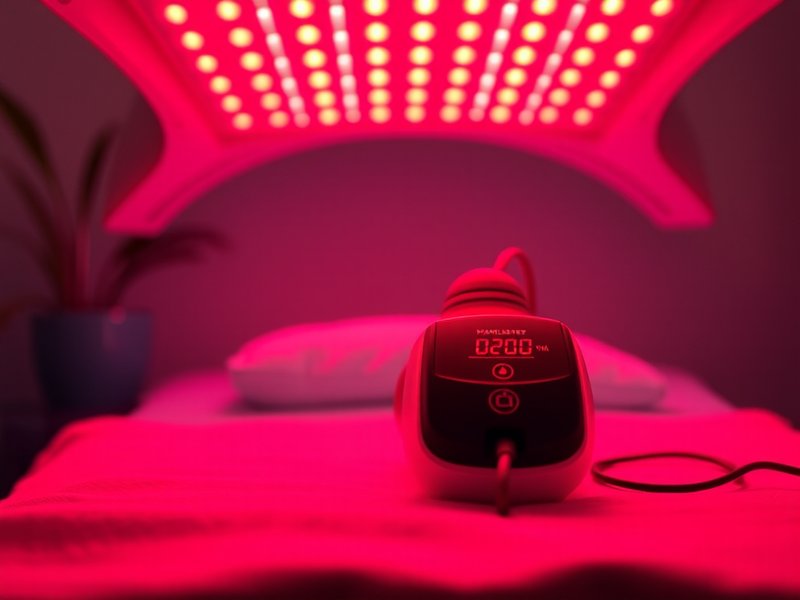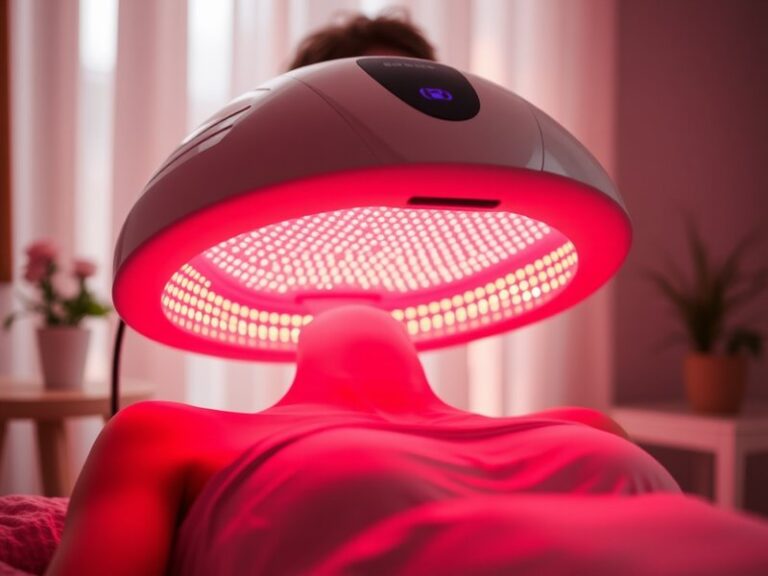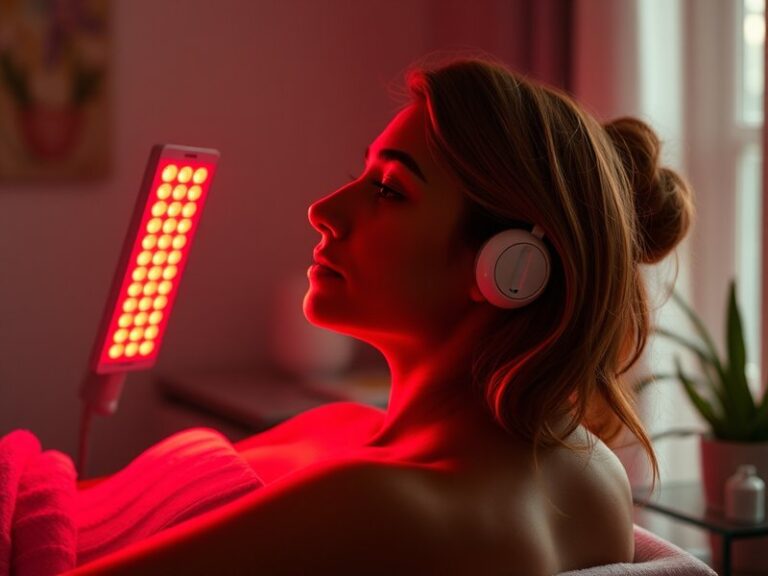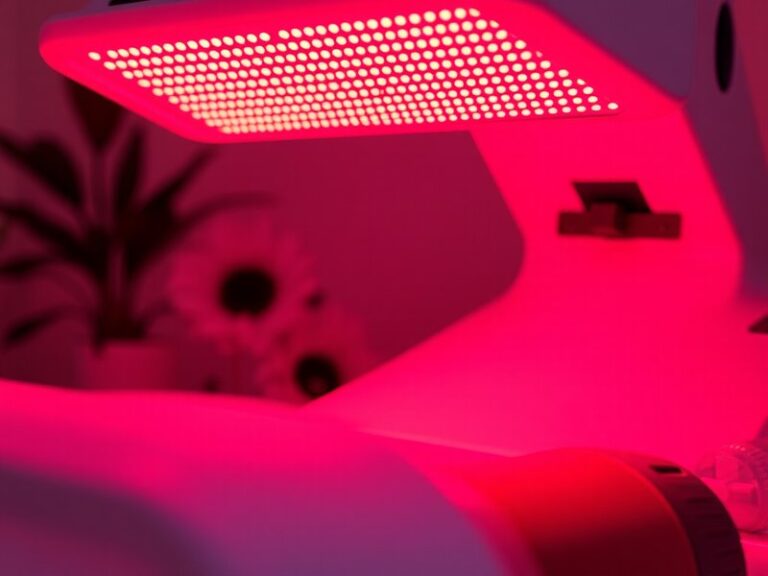How Many Calories Do You Burn In Red Light Therapy?
How Many Calories Do You Burn In Red Light Therapy?
Can red light therapy really contribute to your fitness goals, specifically calorie burning?
In this article, we will explore the relationship between red light therapy and calorie burning. While red light therapy is often associated with skin health, pain relief, and muscle recovery, there’s an emerging interest in its potential role in weight management. We will delve into the science, benefits, and considerations surrounding this innovative therapy.
Key Takeaways
- Red light therapy may assist in metabolism and improve workout recovery, but its direct effect on calorie burning is still under research.
- Many factors, such as intensity and duration of treatment, can influence the calorie-burning potential during red light therapy sessions.
- As an adjunct to a healthy lifestyle, red light therapy can be a valuable tool for some individuals looking to enhance their wellness routine.
What is Red Light Therapy?
Red light therapy (RLT) is a treatment that uses low-wavelength red light to stimulate cellular processes. This therapy is also known as low-level laser therapy (LLLT) or photobiomodulation. RLT works by enhancing mitochondrial function, which can lead to increased energy production and potentially support weight loss efforts.
The therapy is typically administered through LED devices that can vary in intensity and wavelength. Research indicates that exposing the skin to specific wavelengths of light can promote healing, reduce inflammation, and improve overall cellular health.
Get informed with Duration in red light therapy bed?
How Does It Work?
The light emitted during red light therapy penetrates the skin and is absorbed by mitochondria, the energy-producing centers of cells. This exposure to light:
– Increases ATP (adenosine triphosphate) production, providing more energy for cells.
– Improves blood circulation, which can enhance the body’s ability to transport nutrients and oxygen.
– Stimulates collagen production, benefiting skin health.
What are the Benefits of Red Light Therapy?
While red light therapy primarily focuses on healing and repair, it offers several potential benefits that may indirectly relate to calorie burning and overall wellness.
Enhanced Recovery/Post-Workout Support
RLT can aid in muscle recovery after strenuous workouts. By reducing inflammation and improving blood flow, it allows athletes to return to their training regimens quicker and with less discomfort.
Improved Metabolism
Some studies suggest RLT may stimulate metabolic activity, which could enhance fat oxidation during exercise. This may contribute to a more efficient calorie-burning process over time, although more research is needed in this area.
Pain Relief
Many individuals use red light therapy to alleviate pain, especially in muscles and joints. By managing discomfort effectively, it encourages continued physical activity, which is crucial for maintaining a healthy weight.
Skin Health Improvement
Red light therapy can enhance skin appearance and texture, potentially providing a confidence boost. By making individuals feel better about their appearance, they might be more inclined to engage in physical fitness and outdoor activities.
Is it Possible to Burn Calories with Red Light Therapy?
The primary inquiry regarding red light therapy is whether it can directly contribute to calorie burning. While research indicates that RLT can stimulate cellular activity and support metabolic processes, the actual calories burned during a session are likely minimal compared to traditional exercise.
What are the Advantages of Using Red Light Therapy?
Using red light therapy as part of a broader health strategy comes with several advantages.
– Non-invasive and Pain-free: Unlike many weight-loss treatments, RLT is non-invasive and typically does not cause discomfort.
– Convenient: Sessions can be relatively quick, often lasting only 10 to 20 minutes.
– Supports Overall Wellness: Beyond calorie burning, RLT promotes skin health and recovery.
What are the Disadvantages of Using Red Light Therapy?
Despite its benefits, there are some drawbacks to consider.
– Limited Research on Calorie Burning: Current studies have not definitively linked RLT to significant calorie burning, necessitating more research.
– Cost of Equipment: High-quality devices may be expensive, leading some individuals to avoid the investment.
– Results Vary: Individual responses to RLT can differ, making it less predictable for weight loss or calorie burning.
What are the Things to Consider Before Trying Red Light Therapy?
Before starting red light therapy, it’s essential to consider a few factors.
Check out the full story Red Light Therapy for Loose Skin?
Consult with a Professional
Seek advice from a healthcare provider to determine if red light therapy is appropriate for your health and fitness goals.
Research Equipment Quality
If opting for at-home devices, ensure they are from reputable manufacturers and meet required safety standards.
Combine with Other Health Practices
For optimal results, incorporate red light therapy into a balanced routine that includes proper nutrition and physical activity.
Monitor Progress
Keep track of your fitness journey. Monitor how red light therapy affects your recovery and overall well-being.
What are the Alternatives to Red Light Therapy?
While red light therapy offers unique benefits, several alternatives can also support fitness and wellness goals.
Infrared Sauna Use
Infrared saunas heat your body directly, potentially promoting calorie burning and muscle relaxation.
Cryotherapy
This treatment involves short exposure to extreme cold, which can increase metabolism and enhance recovery similar to red light therapy.
High-Intensity Interval Training (HIIT)
Combining intense bursts of exercise with short rest periods, HIIT effectively burns calories and improves overall fitness levels.
Massage Therapy
Massage can reduce muscle tension and soreness, similar to RLT’s recovery benefits, while also promoting relaxation and well-being.
Conclusion: Is it Recommended to Try Red Light Therapy?
While red light therapy has potential benefits for overall health and recovery, its role in calorie burning remains inconclusive. If you are considering adding this therapy to your wellness routine, it could serve as a complementary tool, especially when combined with traditional exercise and healthy eating habits. Ultimately, the best approach to weight management involves a holistic strategy that prioritizes physical activity, diet, and self-care.
Frequently Asked Questions
Can red light therapy replace exercise?
No, red light therapy should not be considered a substitute for regular physical activity. It can complement a fitness routine but does not replace the benefits of exercise.
How long does a typical red light therapy session last?
Sessions typically last between 10 to 20 minutes, depending on the device used and treatment goals.
Are there any side effects associated with red light therapy?
Red light therapy is generally considered safe with few side effects, but some individuals may experience mild skin irritation or temporary redness.
Can I use red light therapy every day?
Many people use red light therapy daily or several times a week, but it’s important to follow the device’s guidelines and seek professional advice for tailored recommendations.
Is red light therapy effective for fat loss?
Current research is inconclusive regarding its effectiveness for fat loss. While it may enhance cellular energy and metabolic function, additional studies are necessary to confirm significant weight loss results.






